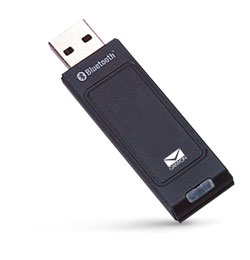Freelancer Multiplayer Id Keygen For Mac
Mac, iPod, iPhone & iPad - EveryMac.com's Ultimate Mac Lookup Lookup Macs, iPods, iPhones and iPads by Apple Order Number, Model Number, EMC Number, Model Identifier, Serial Number and Intel processor number. Computers do not have Mac addresses; instead, those are assigned to network devices. And, as such, HP keeps no records of Mac addresses assigned to those devices because those assignments are done by the manufacturers of the networking chipsets, not HP.
Welcome to the latest edition of Jeremy’s 5, my latest quick roundup of 5 interesting little things I’ve been testing over the past week. These are all items that aren’t big enough for full articles, but are worth sharing with you anyway. This week’s edition discusses the state of Apple TV apps/games as we close out 2015, a tip on how to deal with a broken Touch ID sensor, and three apps:, and 1. Rethinking Apple’s 4th-Gen Apple TV. As 2015 draws to a close, I wanted to revisit an editorial I wrote back in October, “” The editorial’s bullish recommendation was that was a safe long-term bet, though it would likely have a somewhat rocky launch: The next year will be a wild ride for early adopters, though I do think the first two or three months may be somewhat chaotic as developers rush to get their hastily-completed apps and games into the Apple TV App Store. By contrast, my, opining two weeks after the Apple TV’s release that the price and app quality made it a “risky upgrade from the prior model.” Chance recommended sticking with the until apps improved and/or an Apple cable TV streaming service launched.
Although I use the new Apple TV every day, I’ve thought about Chance’s take quite a few times, because our Apple TV 4 is used mostly like our prior Apple TV 3: for playing videos. Ever since the Apple TV App Store opened, I’ve been actively hunting for “great” apps, but apart from new video channels — too many of which are locked behind cable subscriptions — I’ve found very few non-gaming downloads worth keeping on the device. Another way to put this is that if you’re not a gamer, the Apple TV 4 is certainly not a must-buy right now. Games are a different story.
As of today, there are a handful of compelling Apple TV games, including, and, while the is also remarkably popular. For better or worse, virtually all of them are ports of existing iPhone and iPad games. There are two huge positives to this: you can instantly pick up on your Apple TV where you left off on your smaller device, and your iOS purchase gives you immediate (free) access to the Apple TV version. But thus far, you have little incentive — apart from seeing games on a larger screen — to play heavily on the Apple TV itself, and unless you have a Bluetooth game controller, you probably won’t want to use the Siri Remote for gaming. My nightstand is currently loaded with Apple TV accessories: a, a for quiet listening, a, and a that alternates between refueling my Siri Remote and iPhone. Right now, it’s comforting that all of these accessories can also be used with my iPad and iPhone.
Freelancer Multiplayer Id Keygen For Mac Free
I remain optimistic that the Apple TV will soon be making equally good use of them, as well. Has Your Touch ID Sensor Failed? Don’t Use iTunes To Update iOS! I’ve been pretty lucky with iPhones over the years — partial or complete hardware failures have thankfully been rare. But I ran into a new situation this past week that shows how one small (and arguably trivial) broken piece can completely destroy your ability to use a recent iPhone or iPad. Just after my wife’s iPhone 6 warranty ran out, her Touch ID sensor stopped working — it started reading slowly, then stopped reading entirely, erased her stored fingerprints, and refused to store new ones. She wasn’t thrilled to lose Apple Pay access, but willing to live with the issue until her next iPhone upgrade. Over the course of the next few weeks, however, we learned that a failure of the Touch ID sensor actually creates bigger issues for an iOS device than just removing fingerprint scanning.
When iOS 9.2 came out, we discovered that she couldn’t do an over-the-air iOS software update on her phone; it repeatedly failed without explanation. Then, we made the mistake of trying to use iTunes to update the iPhone. ITunes got 50% of the way through the “verifying” stage before failing, and completely bricking the phone, which at that point couldn’t be revived or moved past the “Connect to iTunes” screen. An identified the issue as Touch ID-specific, without providing any fix. At that point, your only real alternative is to pay to have the iPhone (or iPad, if that’s your Touch ID device) replaced. People who have tried to replace their Touch ID sensors using third-party repair services have discovered that it’s not easy — each Touch ID sensor is tied to the specific CPU inside an iPhone, so if Touch ID fails, and you want to keep upgrading your iPhone, you’ll need to replace the entire logic board, a prohibitively costly option. (I would imagine that attorneys are already working on the class action lawsuit for this, if it hasn’t been filed already.) Your other replacement alternative is AppleCare+, which isn’t cheap.
But if you want to just keep using your phone without Touch ID, my advice is simple: avoid using iTunes to update iOS. Kimoji (Seriously) May Be The Start Of Something Bigger. Building on emoji — the little smiley face, heart, unicorn, pizza, and taco icons found in iOS’s alternate picture keyboard — Kim Kardashian’s latest app, raced to the top of the App Store’s “Top Paid Apps” charts the day it was released. Kim claimed that she broke the App Store, and Apple, uncharacteristically, responded with a denial. Today, Kimoji is the App Store’s #4 paid app, behind, and a party game called — it’s also the only non-game app in the top 10.
Is there a reason for its success, apart from Kardashian’s popularity? I give Kim and developer Whalerock Digital Media credit for capitalizing on something that’s become apparent over the past year: people love new emoji. Believe it or not, readers have shown more interest in new emoji additions to iOS than pretty much any other individual feature Apple has added over the past year or two. By including some racy content, Kimoji goes further than other, which are comparatively tame. For a variety of reasons, third-party “emoji” apps need to rely on a hack: they include images that you paste into text entry fields, and send just like picture messages. But as Kimoji demonstrates, having handy access to more images can actually be fun, particularly if you want to exchange those images with friends or family who appreciate icons such as suggestive fruits, fancy cars, and rainbow hearts.
In 2016, I would be surprised if we didn’t see other celebrities, particularly musicians (say, Snoop Dogg), follow in Kim’s footsteps. Badland 2. For years, Apple has been encouraging iOS developers to release games that are beautiful and easy to control using a touchscreen. That’s why the side-scrolling adventure game won an Apple Design Award two years ago; it was gorgeous and simple. Using only one button — “move” — you could maneuver a furry, flying little ball through a variety of comically deadly environments. All of the characters and obstacles were rendered in highly detailed but jet black silhouettes, contrasting with rich, colorful backgrounds. The just-released sequel preserves the original game’s formula, but quickly ups the ante with new elemental hazards such as liquids, flames, frost, and light, all including improved special effects. A new two-button control scheme (“move left,” “move right”) lets you explore crazier, twisting level designs, with 3D Touch support for the latest iPhones that can make your character’s wing-flapping a little more precise. While many of the core gameplay elements feel familiar, they’ve been made more fun (and random) by cranking up the number of objects on screen at once: it’s common to take control of dozens of clones simultaneously, only to see (most of them) shredded in the gears of machines, or squashed between compacting walls; if only one survives, it gets to continue on.
Badland 2 is worth seeing if you appreciate simple controls, dark humor, and rugged, industrial art. Real Boxing 2 CREED. The original was the best-looking and -playing boxing game released for iOS. But the sequel, featuring improved graphics and tie-ins from the latest Rocky movie, is even better.
Released in November and recently updated with new bosses and gifts, still lets you completely custom-create a boxer from scratch and take him through a series of training sessions and “career mode” fights. The major change this time is the option to play through the career of Adonis “Creed” Johnson, son of legendary Rocky opponent Apollo Creed; Sylvester Stallone himself shows up as Rocky in training sequences. If you’re not a boxing fan, the biggest reason to download Real Boxing 2 is to see just what your iOS device is capable of doing. Powered by the console game-building Unreal Engine 4, it features some of the most detailed 3D characters, backgrounds, skin textures and special effects that iPads and iPhones can handle, and the controls are easy to learn, too. While the career mode can get repetitive, online multiplayer modes and one-off challenges are available to keep the game interesting from day to day.
Based on the longevity of the original Real Boxing, you can expect lots and lots of new features to be added over the game’s lifetime. More From This Author Check out more of my! I’ve published a lot of different topics of interest to Mac, iPad, iPhone, iPod, Apple TV, and Apple Watch users, as well as a, a, a,. Author, lawyer, and award-winning restaurateur Jeremy Horwitz started his journalism career in the early 1990’s, covering video games as a freelancer for numerous publications before creating and running Ziff Davis’s Intelligent Gamer magazine. A graduate of Cornell Law School, he previously ran editorial for the Apple-centric site iLounge and created the historic iLounge Pavilion at CES before joining 9to5Mac and 9to5Toys as a Senior Editor. A lifelong consumer electronics expert and gourmet, he now focuses on the changing ways people work, play, eat, and travel.


His Spanish restaurant Aro Bar de Tapas won Best New Restaurant (Opened 2015-2016), Best Charcuterie, Best Craft Cocktails, and Best Desserts awards.
. What and where is my computer ID? What and where is my computer ID? Solution: First and foremost, please know that it is not necessary to know your computer id if you use Toontrack’s Product manager authorization system. The Product Manager (and a video explaining it) can be found here: The Toontrack Product Manager greatly simplifies the installation and authorization process by taking out all of the guess work. So, if you are looking for your computer id and your computer is connected to the internet, please stop what you are doing and download the new Toontrack product manager.
If your computer is not connected to the internet you will need the computer id. It is found by launching the program and then clicking the OFFLINE authorization button. The computer id is based on various components in your computer hardware and can not be changed by the user.

It CAN NOT be found in your system settings (Control Panel / About this Mac), it will only show after you have installed and then launched your product in your host.
Comments are closed.
